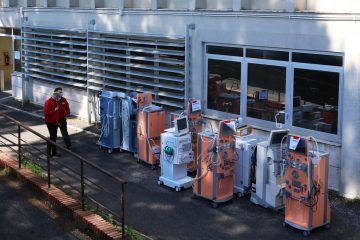Laura Kolbe in the New York Review of Books:
 When I became an attending physician at New York–Presbyterian’s Weill Cornell Hospital last summer, after graduating from a residency at Brigham and Women’s Hospital in Boston, I became a hospitalist: a doctor of general internal medicine who takes care of patients for the duration of their inpatient hospital care. Besides my own writing and research, I also teach medical students and residents in a variety of courses and electives. But for me, as for roughly a million other doctors in the United States, that regular routine is changing very suddenly. Part of the challenge we’re facing with Covid-19 is that even knowing this is an event of shocking magnitude, we are not yet able to measure or foresee exactly how fast the disease’s progress through the world’s population will be.
When I became an attending physician at New York–Presbyterian’s Weill Cornell Hospital last summer, after graduating from a residency at Brigham and Women’s Hospital in Boston, I became a hospitalist: a doctor of general internal medicine who takes care of patients for the duration of their inpatient hospital care. Besides my own writing and research, I also teach medical students and residents in a variety of courses and electives. But for me, as for roughly a million other doctors in the United States, that regular routine is changing very suddenly. Part of the challenge we’re facing with Covid-19 is that even knowing this is an event of shocking magnitude, we are not yet able to measure or foresee exactly how fast the disease’s progress through the world’s population will be.
What doctors call the “natural history” of Covid-19 can be envisioned as four stages; most people’s individual cases will stop at the first or, at most, the second stage, while an unlucky minority will experience the third, or all four. First, there is either an asymptomatic or a mildly symptomatic, nonspecifically “flu-like” illness. In Guangzhou province in China, researchers found that the median incubation period is about four days before symptoms, if any, set in. A portion of those with symptomatic, positive disease then experience a second stage: viral pneumonia, often visible on chest X-rays and CT scans by the varying degrees of inflammation of the lung’s interstitium, the connecting and supportive tissues that line the small airways and blood vessels where oxygen and carbon dioxide are exchanged between blood and air with each breath and heartbeat.
More here.
